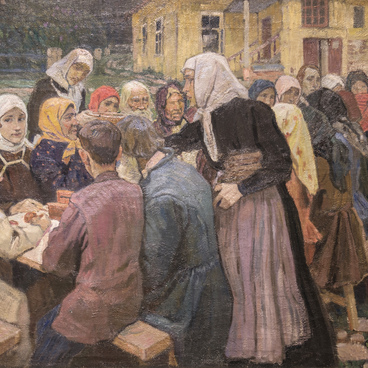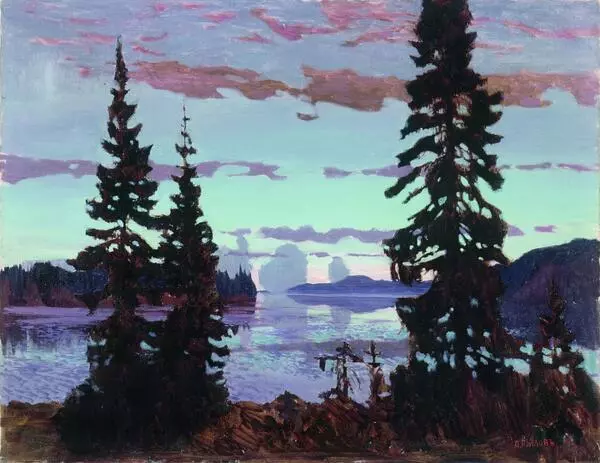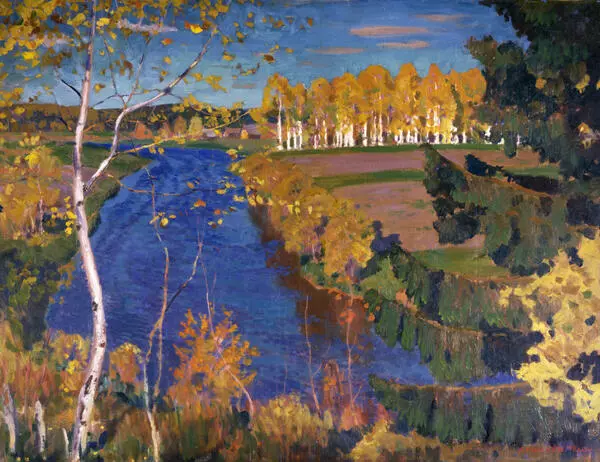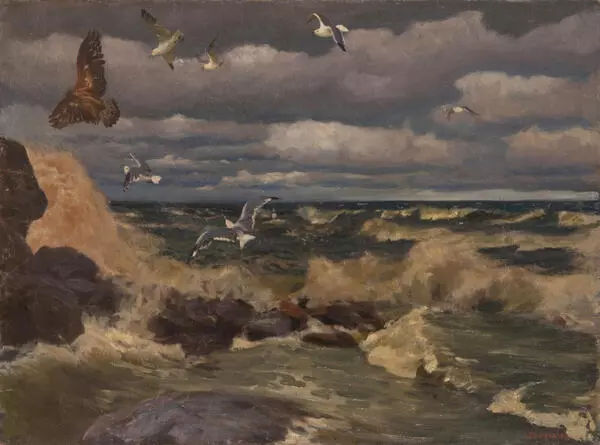Arkady Aleksandrovich Rylov was a famous Russian and Soviet painter. He was born in the village of Istobenskoye, in the Orlov uyezd of the Vyatka Governorate. He spent his entire childhood in Vyatka. This city inspired him for many years.
Arkady Rylov’s first painting created after his graduation from the Academy of Arts, “The Dying Fire”, was purchased by the philanthropist Pavel Tretyakov. The painting “From the Banks of the Vyatka” earned him a gold medal at the Munich exhibition. For his landscape “Green Noise”, he was elected a full member of the Autumn Salon in Paris. Arkady Rylov taught painting and was a member of various art associations, including Mir iskusstva (World of Art), the Union of Russian Artists, the Community of Artists, and the Association of Artists of Revolutionary Russia. He also took part in nationwide and international exhibitions.
From 1902, the artist taught animal drawing at the Drawing School of the Society for the Encouragement of the Arts. In 1917, he started teaching at the Academy of Arts. Solo exhibitions were organized in Leningrad and Moscow during the artist’s lifetime. Nowadays, his works are kept in many museums and private collections. Although the artist stayed in St. Petersburg after graduating from the Academy of Arts, he never lost his ties with his native land. The artist visited Vyatka to paint studies there, was an honorary member of the Vyatka Art Club, and participated in various local exhibitions.
At the end of his life, Arkady Rylov also achieved
success as an illustrator for the magazine “Chizh” (1936). He designed the
books “Teremok” (1936) and “Tales of a Trapper” (1937) by Vitaly Bianki. The National Gallery of the Komi Republic houses three
paintings by Arkady Rylov. The history of how these paintings ended up in the
Komi Republic is also quite interesting. In 1935, Georgy Afanasyevich Startsev,
the director of the Komi Museum of Local Lore, met Arkady Rylov. Their meeting
grew into a friendship. The artist promised to donate some of his paintings to
the museum in Syktyvkar. He sent a parcel with two studies, “Canoe” and “Steep
Bank”, along with a pencil portrait of an elderly woman with an inscription,
“Nenila Ivanovna Kuspeleva in 1900, Komi, from Sysola, my nanny“.





